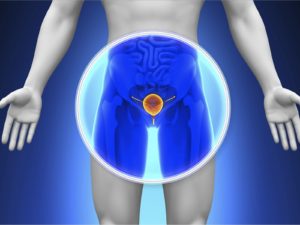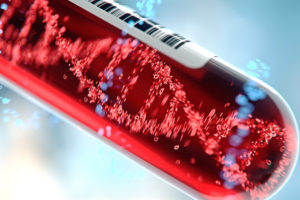Prostate Cancer Grading Gleason Score
The Gleason score and Grade Groups
The Gleason score is the most common system doctors use to grade prostate cancer. The grade of a cancer tells you how much the cancer cells look like normal cells. This gives your doctor an idea of how the cancer might behave and what treatment you need.
To find out the Gleason score or Grade Group, a pathologist looks at several samples of cells (biopsies) from your prostate.
The pathologist grades each sample of prostate cancer cells from 3 to 5 based on how quickly they are likely to grow or how aggressive the cells look. You may hear this score being called the Gleason Grade.
Doctors then work out an overall Gleason score by adding together the 2 most common Gleason grades. So for example, if the most common Gleason grade is 3, and the second most common is 4, then the overall Gleason score is 7. Or they might write the scores separately as 3 + 4 = 7. This combined score is also now called the Grade Group.
There are 5 Grade Groups. Grade Group 1 is the least aggressive and Grade Group 5 is the most aggressive.
This is how the Gleason score and Grade Groups match up and what it means:
Gleason Score Grade Group
Gleason score 6 (or 3 + 3 = 6) Grade Group 1
Gleason score 7 (or 3 + 4 = 7) Grade Group 2
Gleason score 7 (or 4 + 3 = 7) Grade Group 3
Gleason score 8 (or 4 + 4 = 8) Grade Group 4
Gleason score 9 or 10 (or 4 + 5 = 9, 5 + 4 = 9 or 5 + 5 = 10) Grade Group 5

Gleason Score
Prostate Cancer Grading & Prognostic Scoring
The Gleason Score is the grading system used to determine the aggressiveness of prostate cancer prostate. This grading system can be used to choose appropriate treatment options.
Gleason Score ranges from 1-5 and describes how much the cancer from a biopsy looks like healthy tissue (lower score) or abnormal tissue (higher score). Most cancers score a grade of 3 or higher.
Since prostate tumors are often made up of cancerous cells that have different grades, two grades are assigned for each patient.
A primary grade is given to describe the cells that make up the largest area of the tumor and a secondary grade is given to describe the cells of the next largest area.
For instance, if the Gleason Score is written as 3+4=7, it means most of the tumor is grade 3 and the next largest section of the tumor is grade 4, together they make up the total Gleason Score.
If the cancer is almost entirely made up of cells with the same score, the grade for that area is counted twice to calculated the total Gleason Score.
Typical Gleason Scores range from 6-10. The higher the Gleason Score, the more likely that the cancer will grow and spread quickly.
- Scores of 6 or less describe cancer cells that look similar to normal cells and suggest that the cancer is likely to grow slowly.
- A score of 7 suggests and intermediate risk for aggressive cancer. Scoring a 7 means that the primary score (largest section of the tumor) scored a 3 or 4.Tumors with a primary score of 3 and a secondary score of 4 have a fairly good outlook, whereas cancers with a primary Gleason Score of 4 and a secondary score of 3, are more likely to grow and spread.
- Scores of 8 or higher describe cancers that are likely to spread more rapidly, these cancers are often referred to as poorly differentiated or high grade.
TNM Staging
The TNM system is a way of staging prostate cancer. TNM stands for Tumor, Node, Metastasis.
Knowing the stage of the cancer helps the doctor to work out what treatment you need. They use the information about the stage of the cancer along with:
- The result of your PSA blood test
- What your cells look like under a microscope (the Gleason score)
Tumor (T)
Tumor describes the size of the tumor (area of cancer). This is a simplified description of the T stage.
There are 4 main stages of cancer size in prostate cancer – T1 to T4.
T1
T1 means the cancer is too small to be seen on a scan, or felt during examination of the prostate.
It’s divided into T1a, T1b and T1c.
T1a means that the cancer is in less than 5% of the removed tissue. Your surgeon unexpectedly finds T1a cancers during surgery for other reasons.
T1b means that the cancer is in 5% or more of the removed tissue. Your surgeon unexpectedly finds T1b cancers during surgery for other reasons.
T1c cancers are found by biopsy, for example after a raised PSA level.
T2
T2 means the cancer is completely inside the prostate gland. It’s divided into T2a, T2b and T2c.
T2a means the cancer is in only half of one side of the prostate gland.
T2b means the cancer is in more than half of one side of the prostate gland, but not both sides.
T2c means the cancer is in both sides but is still inside the prostate gland.
T3
T3 means the cancer has broken through the capsule (covering) of the prostate gland. It’s divided into T3a and T3b.
T3a means the cancer has broken through the capsule (covering) of the prostate gland.
T3b means the cancer has spread into the tubes that carry semen (seminal vesicles).
T4
T4 means the cancer has spread into other body organs nearby, such as the back passage, bladder, or the pelvic wall.
Node (N)
Node (N) describes whether the cancer has spread to the lymph nodes.
N is split into N0 and N1.
N0 means that the nearby lymph nodes don’t contain cancer cells
N1 means there are cancer cells in lymph nodes near the prostate
Metastasis (M)
Metastasis (M) describes whether the cancer has spread to a different part of the body.
There are 2 stages of metastasis – M0 and M1.
M0 means the cancer hasn’t spread to other parts of your body.
M1 means the cancer has spread to other parts of the body outside the pelvis. It is split into M1a, M1b and M1c.
M1a means there are cancer cells in lymph nodes outside the pelvis
M1b means there are cancer cells in the bone
M1c means there are cancer cells in other parts of the body
Treatment
The Gleason score and Grade Groups are important factors that can help your doctor recommend if you need treatment and the type of treatment you need. Other factors include:
- The size of the cancer and whether it has spread (the stage)
- Your PSA level
- Your age and how well you are
Another important factor is your own preference about the treatments available and their side effects.
Doctors may use these factors to work out your prognosis. This means your likelihood of coming to harm from the cancer if you do or do not have treatment. They balance this against your overall risk of coming to harm from other illnesses.
The stage of your cancer helps your doctor to decide which treatment you need. Treatment also depends on:
- What the cancer cells look like under the microscope (Gleason score)
- Your PSA blood test level
- Your type of cancer (the type of cells the cancer started in)
- Your age and general health
- How you feel about what the treatments involve and the side effects
You might not have treatment straight away. Sometimes your doctor monitors your cancer and starts treatment if the cancer begins to grow. Depending on your situation, they may call this:
- Active surveillance
- Watchful waiting
Treatment might include the following:
- Surgery to remove your prostate
- External radiotherapy
- Internal radiotherapy (brachytherapy)
- Hormone therapy
- Chemotherapy
- Symptom control treatment
- High frequency ultrasound therapy (HIFU) as part of a clinical trial
- Cryotherapy as part of a clinical trial

Bay Biosciences is a global leader in providing researchers with high quality, clinical grade, fully characterized human tissue samples, bio-specimens and human bio-fluid collections.
Samples available are cancer (tumor) tissue, cancer serum, cancer plasma cancer PBMC and human tissue samples from most other therapeutic areas and diseases.
Bay Biosciences maintains and manages its own bio-repository, human tissue bank (biobank) consisting of thousands of diseased samples (specimens) and from normal healthy donors available in all formats and types.
Our biobank procures and stores fully consented, deidentified and institutional review boards (IRB) approved human tissue samples and matched controls.
All our human tissue collections, human specimens and human bio-fluids are provided with detailed samples associated patient’s clinical data.
This critical patient’s clinical data includes information relating to their past and current disease, treatment history, lifestyle choices, biomarkers and genetic information.
Patient’s data is extremely valuable for researchers and is used to help identify new effective treatments (drug discovery & development) in oncology, other therapeutic areas and diseases.
Bay Biosciences banks wide variety of human tissue samples and biological samples including cryogenically preserved at – 80°C.
Including fresh frozen tissue samples, tumor tissue samples, FFPE’s, tissue slides, with matching human bio-fluids, whole blood and blood derived products such as serum, plasma and PBMC’s.
Bay Biosciences is a global leader in collecting and providing human tissue samples according to the researchers specified requirements and customized, tailor-made collection protocols.
Please contact us anytime to discuss your special research projects and customized human tissue sample requirements.
Bay Biosciences provides human tissue samples (human specimens) from diseased and normal healthy donors which includes:
- Peripheral whole-blood,
- Amniotic fluid
- Bronchoalveolar lavage fluid (BAL)
- Sputum
- Pleural effusion
- Cerebrospinal fluid (CSF)
- Serum (sera)
- Plasma
- Peripheral blood mononuclear cells (PBMC’s)
- Saliva
- Buffy coat
- Urine
- Stool samples
- Aqueous humor
- Vitreous humor
- Kidney stones (renal calculi)
- Other bodily fluids from most diseases including cancer.
We can also procure most human bio-specimens and can-do special collections and requests of human samples that are difficult to find. All our human tissue samples are procured through IRB approved clinical protocols and procedures.
In addition to the standard processing protocols Bay Biosciences can also provide human plasma, serum, PBMC bio-fluid samples using custom processing protocols, you can buy donor specific sample collections in higher volumes and specified sample aliquots from us.
Bay Biosciences also provides human samples from normal healthy donors, volunteers, for controls and clinical research, contact us Now.
日本のお客様は、ベイバイオサイエンスジャパンBay Biosciences Japanまたはhttp://baybiosciences-jp.com/contact/までご連絡ください。


